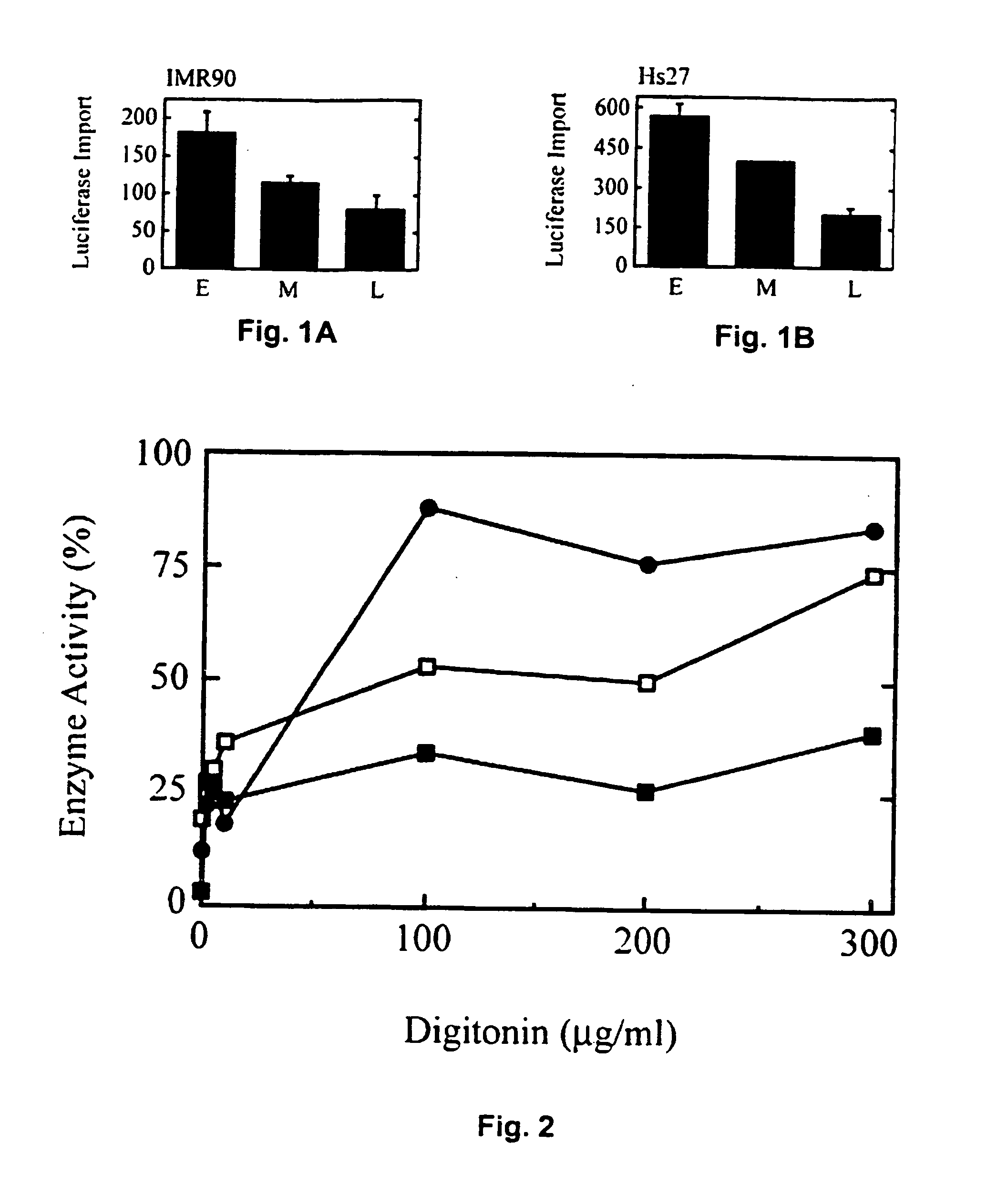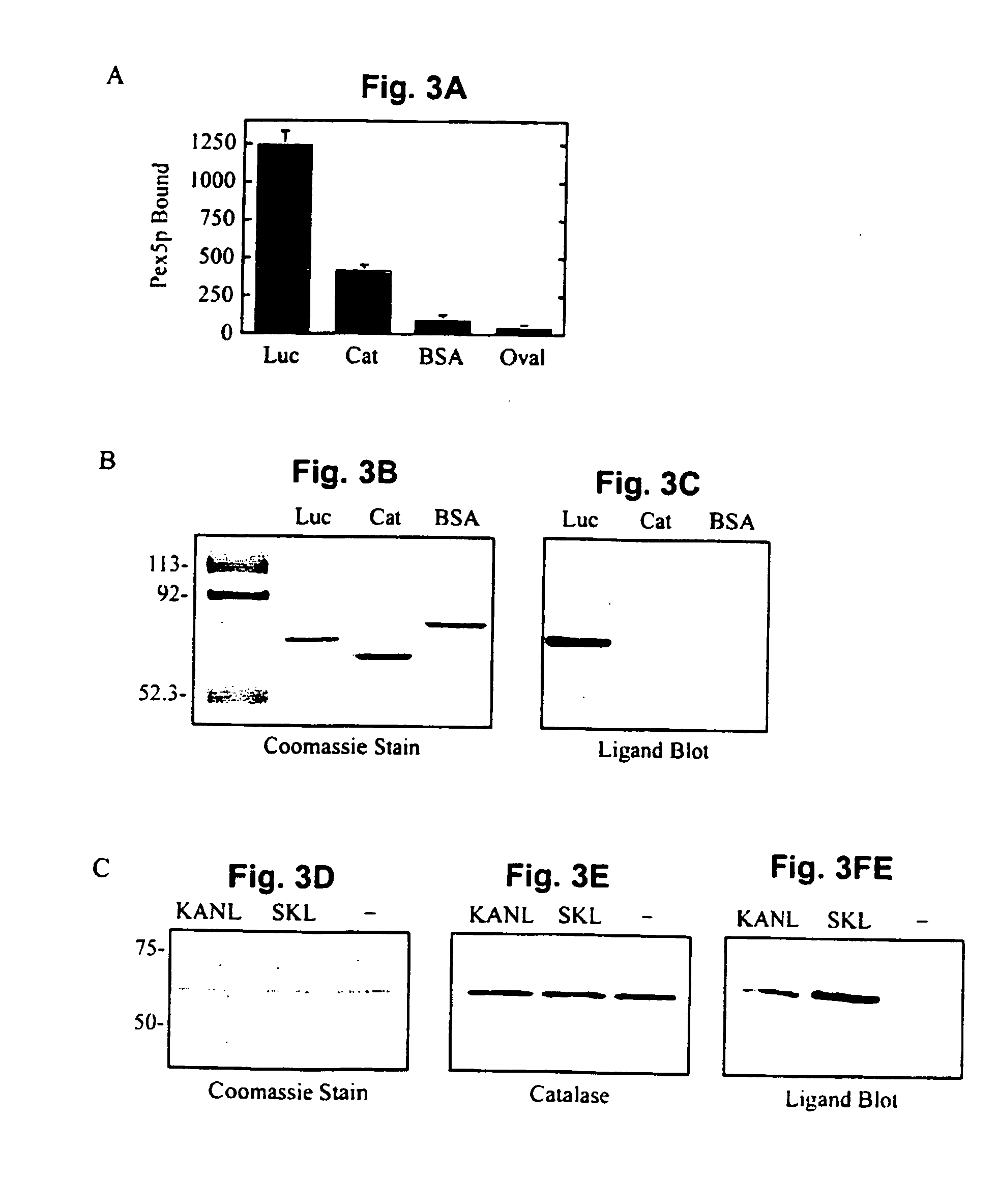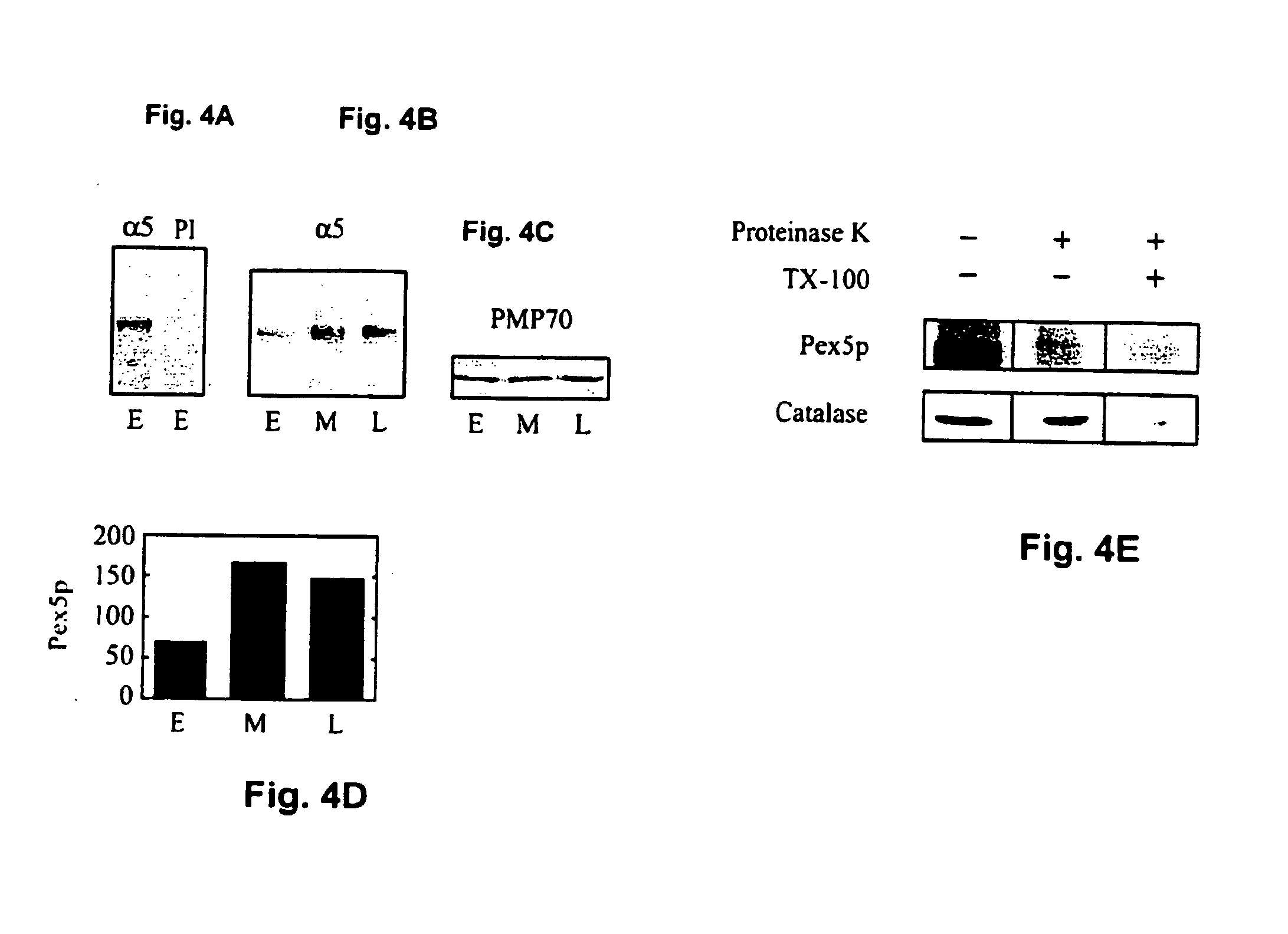Promotion of peroxisomal catalase function in cells
a technology of peroxisome and catalase, applied in the field of biochemistry and medicine, can solve the problems of reducing the ability of peroxisomes to correctly compartmentalize catalase, and achieve the effects of reducing the accumulation of ros, increasing the life span of such cells, and reducing the effects of aging
- Summary
- Abstract
- Description
- Claims
- Application Information
AI Technical Summary
Benefits of technology
Problems solved by technology
Method used
Image
Examples
example i
Materials and Methods
Cell Culture
[0150] Early passage IMR90 and Hs27 HDFs, obtained from the National Institutes of Aging, Aging Cell Repository / Coriell Institute for Medical Research (Camden, N.J.) and ATCC (Manassas, Va.), respectively, were cultured in DMEM supplemented with 10% fetal bovine serum (Gibco, Grand Island, N.Y.), penicillin, and streptomycin. The cells were maintained at 37° C. in humidified incubators supplemented with 5% CO2. To achieve higher passage levels, the cells were expanded through sub-cultivation. Late passage cells were confirmed to be at or near replicative senescence by staining for senescence-associated β-galactosidase as described (Dimri et al., 1995).
[0151] Where indicated, cells were grown on glass coverslips pretreated with ProNectin F (Biosource International, Camarillo, Calif.).
In Vitro Import Assays
[0152] Peroxisomal protein import was examined in semi-permeabilized cells using ELISA- and immunofluorescence-based in vitro assays. Both ap...
example ii
Age-Related Decline in PTS1-Import Efficiency
[0167] Biochemically-defined in vitro assays were used to show that peroxisomal PTS1-protein import is reduced in aging cells (FIG. 1). The cells employed in this analysis, either IMR90 or Hs27 HDFs, were serially passaged to achieve appropriate population doubling levels (PDLs). A cell's PDL may be considered akin to its age (for reviews see Beckman and Ames, 1998; Dice, 1993), and for our purposes here, we define (IMR90) early passage cells as PDL 1-35, middle passage cells as PDL 36-45, and late passage cells as PDL 46-60. IMR90 cells reach replicative senescence at ˜PDL60. Hs27 cells, which senesce at comparable passage numbers, were similarly analyzed at early, middle, and late passage. Interestingly, both cell types showed import deficits beginning in middle passage (FIG. 1).
[0168] The import substrate in these assays was luciferase, a PTS1-protein containing the carboxy-terminal sequence, serine-lysine-leucine (Gould et al., 1987...
example iii
Characteristics of Peroxisomes in Aging Cells
[0169] Peroxisomes of early, middle, and late passage HDFs were examined by indirect immunofluorescence microscopy. The organelles, identified by their reactivity with antibodies to the peroxisomal membrane protein of 70 kDa (PMP70), appeared as randomly scattered punctate structures in early passage cells. In middle and late passage cells, the number of these structures increased. To more carefully document this point, we counted the number of immunoreactive structures per unit area in early, middle, and late passage IMR90 cells. We found that for every one such structure in early passage cells, there were 1.6 in middle passage cells, and 2.2 in late passage cells. Similar results were obtained with Hs27 cells. Furthermore, this increase in peroxisome abundance was also observed with antibodies to the membrane peroxin, Pex 14p.
[0170] To compare early and late passage cells more directly, we analyzed peroxisomal markers in co-cultured c...
PUM
| Property | Measurement | Unit |
|---|---|---|
| body weight | aaaaa | aaaaa |
| body weight | aaaaa | aaaaa |
| volume | aaaaa | aaaaa |
Abstract
Description
Claims
Application Information
 Login to View More
Login to View More - R&D
- Intellectual Property
- Life Sciences
- Materials
- Tech Scout
- Unparalleled Data Quality
- Higher Quality Content
- 60% Fewer Hallucinations
Browse by: Latest US Patents, China's latest patents, Technical Efficacy Thesaurus, Application Domain, Technology Topic, Popular Technical Reports.
© 2025 PatSnap. All rights reserved.Legal|Privacy policy|Modern Slavery Act Transparency Statement|Sitemap|About US| Contact US: help@patsnap.com



